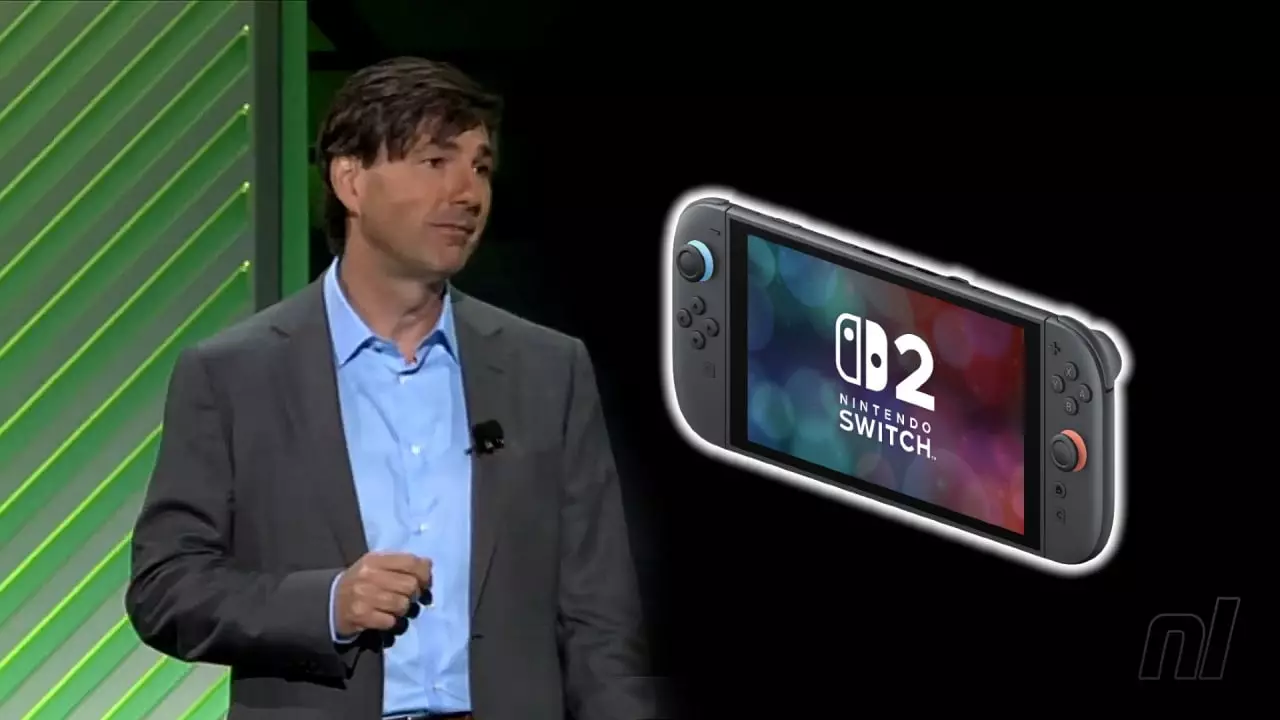The recent announcement of the Nintendo Switch 2’s price has ignited a firestorm of criticism among gamers and fans alike. Set at a staggering $449.99, the new console comes during a period of economic uncertainty where financial concerns are at the forefront of many consumers’ minds. Nintendo’s pricing strategy raises critical questions: Is this value proposition aligned with consumer expectations? Are gamers being pushed away due to economic barriers? The reaction has been notably negative, and the company’s communication—or lack thereof—regarding these issues has only exacerbated the frustration felt by potential buyers.
In a recent interview, Doug Bowser, the president of Nintendo of America, attempted to justify the higher price tag by emphasizing the console’s advanced features and overall gameplay experience. However, his remarks, while well-intentioned, accidentally echoed a cautionary tale from the gaming industry that many will remember: the infamous comments made by Don Mattrick of Microsoft during the launch phase of Xbox One. Specific phrases, such as “not able to afford” the latest console, have struck a dissonant chord and evoked memories of mistrust and disconnect between companies and their consumer bases.
A Comparison with the Past
Echoes of the past can be haunting. Mattrick’s flub regarding the Xbox 360 created a divide that assumed consumers could simply downgrade if they couldn’t keep pace with the advancing technology. Bowser’s comment presents a universally relevant dilemma in the gaming industry: alienating parts of your audience because they cannot meet the financial demands of new technology. It acts as a glaring reminder that gaming has become both a passion and a privilege—a stark contrast to its earlier days, where anyone could simply buy a console without second-guessing their budget.
Moreover, Bowser’s comments regarding the ongoing support for the original Switch serve more as a marketing placeholder rather than a reassurance for budget-conscious consumers. While it is commendable that Nintendo continues to support older models, the perception that they are merely providing a “fallback” option feels dismissive to many. Fans don’t just want access; they crave inclusion, belonging, and connection to the evolving narrative that titles on newer platforms create.
Consumer Sentiment in a Changing Economy
The current economic landscape is unlike the pre-2013 world in numerous ways—persistent inflation, global supply chain issues, and rising costs across almost every sector. For many consumers, spending nearly $450 on a gaming console amid tightening budgets feels not only extravagant but also distasteful. The sentiment surrounding this pricing isn’t merely about the amount itself; it encapsulates a broader feeling of mistrust regarding corporate intentions and pricing strategies. As gamers weigh the decision to invest, they can’t help but question: is this product genuinely worth it?
Despite Bowser’s claims of value, the reality is that perceptions of worth vary significantly between consumer demographics. For hardcore gamers, the new technology might justify the cost, but for casual players and families, the price point can feel exclusionary. The gaming culture should cultivate inclusivity and accessibility, yet comments that suggest an “if you can’t keep up, go back” mentality undermine that ethos.
The Communication Gap
One of the most glaring issues stemming from the Switch 2 pricing announcement is the apparent communication gap. In an age where companies are often scrutinized for their transparency, Nintendo’s seemingly lukewarm response feels inadequate. The lack of a comprehensive narrative that explains the rationale behind the pricing, while concurrently addressing economic concerns, leaves consumers in a position of confusion.
Information on how the Switch 2 differs significantly from its predecessor is scant; users are left to infer its value largely from fragmented comments rather than cohesive messaging. This vague communication strategy contributes to the prevailing mood of uncertainty, as potential buyers grapple with numerous unanswered questions.
While Nintendo aims to elevate the gaming experience with the new Switch 2, the ramifications of the pricing strategy and the corporate dialogue surrounding it have sparked significant discussion. The gaming community’s sentiment reflects a pivotal moment where companies must navigate not only technological advances but also the evolving landscape of consumer needs and expectations in uncertain economic times.


Leave a Reply